1920s Dennis ‘pirate’ bus superbly restored
Posted by Chris Graham on 22nd June 2023
Zack Stiling visits the London Bus Museum to admire a newly-restored Dennis ‘pirate’ bus that’s finished in the livery it last wore in 1929.
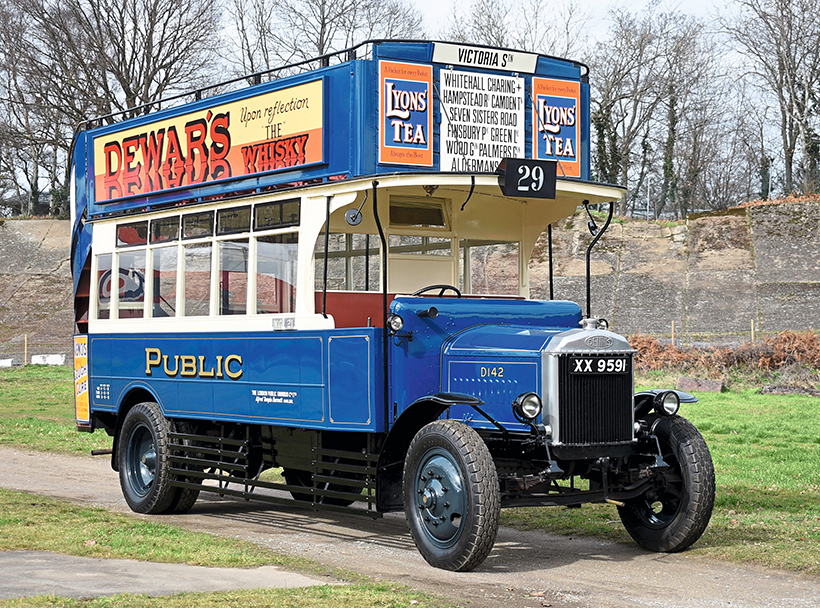
This Dennis ‘pirate’ bus is unique in the livery of the London Public Omnibus Company.
London buses are red; it’s a known fact from Tooting to Timbuktu. And yet, as with much of what’s considered common knowledge, it isn’t entirely true. It certainly wasn’t true in the 1920s, when the state-owned London General Omnibus Company was still trying to monopolise the capital’s motor-bus operations. Beginning in 1922, there were some 220 independent, private operators running ‘pirate’ bus fleets, each with their own colourful liveries, in direct competition with the LGOC.

The newly-restored Dennis at its permanent home, the London Bus Museum, at Brooklands.
Pirate fleets were welcomed by a public which considered the LGOC’s service inadequate. Manufacturers including Dennis and Leyland were also pleased, because they provided an opening into the London bus market which the LGOC, being affiliated with AEC, wouldn’t grant them. They operated legally but became known as ‘pirates’ because of their contentious business ethics. For example, some would only run on busy routes during busy times, leaving the LGOC to pick up the less lucrative services.
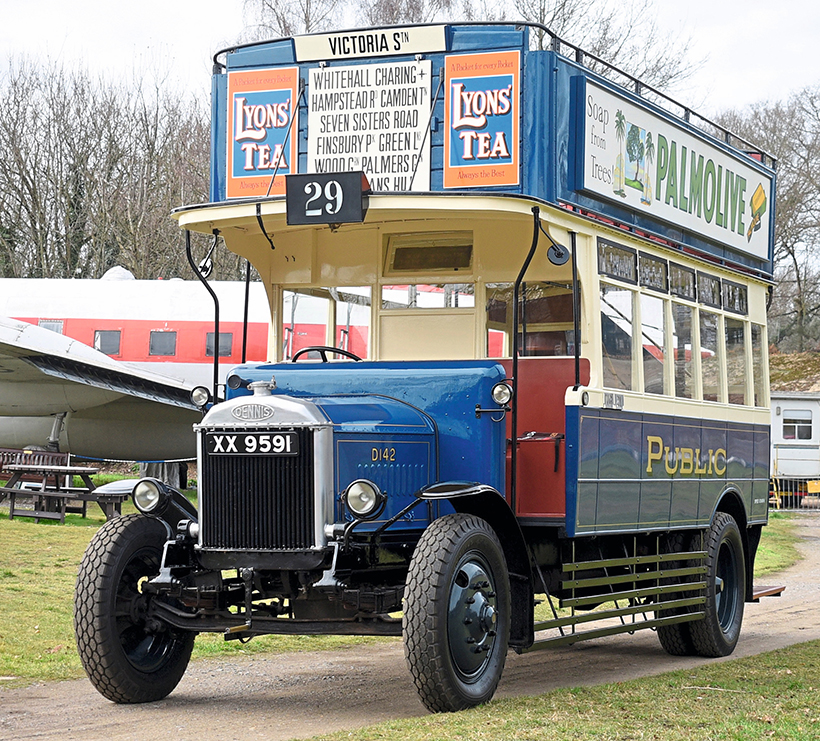
The bus originally served with the Public between 1928 and 1929.
One prominent pirate operator was the London Public Omnibus Company, the chairman of which was one Alfred Temple Bennett. Bennett was a man of many interests – engineer, property developer, freemason and so on. As of 1902, he was manufacturing automatic fog signals for Trinity House, and he produced aircraft components during the Kaiser War. In the early 1920s, he boarded the pirate ship, so to speak, and founded his own bus fleet called Admiral, operating around Enfield and Edmonton.
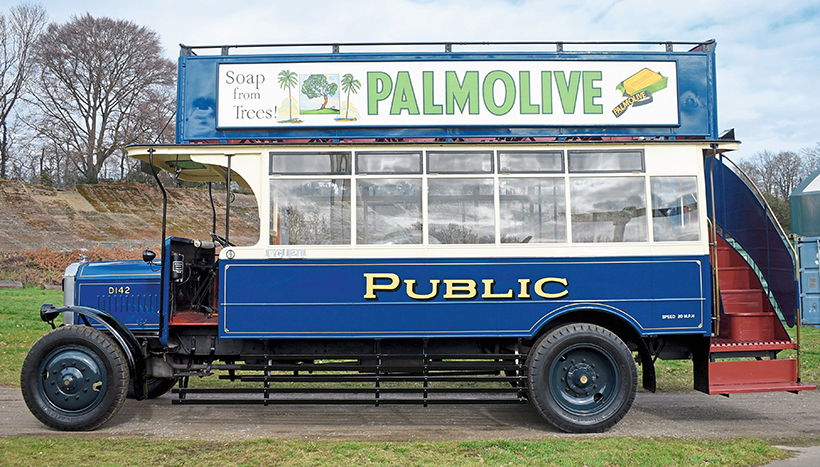
The open-top body by Christopher Dodson seats 48.
Significantly, Admiral’s lobbying eventually persuaded the London authorities to allow town buses to run on pneumatic tyres, then prevented by prohibitive and confusing restrictions, following the example set by the Dennises which had run on the cross-country Greyhound Motor Co services from early 1925. Pneumatics were permitted on London buses from the summer of 1925.
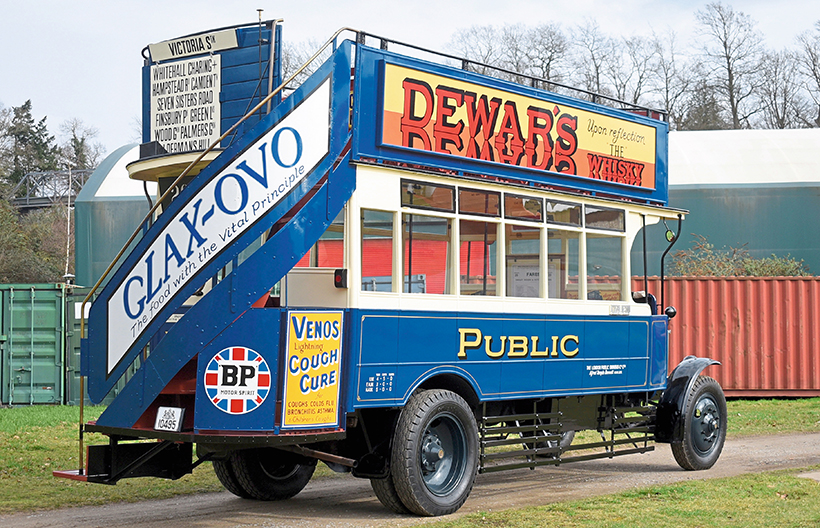
Its survival is thanks to the efforts of Prince Marshall back in the 1970s. The recent restoration was headed by Alan Gaskell, and débuted in October 2022.
Bennett might have considered himself more Henry Morgan than Blackbeard. That is to say, he would have preferred the term ‘privateer’ rather than ‘pirate.’ On becoming chairman of the Public, he operated with an official blessing, since the Public was itself a covert state operation, disguised as a pirate fleet but actually funded entirely by the General with the aim of buying-out the various rival operators to let the General have its monopoly. Not surprisingly, it was viewed with hostility by those who dealt with it, many of whom had believed they were selling to a private consortium. Ultimately, the last pirates were banished with the stroke of a pen in 1934, by the newly-created London Passenger Transport Board.
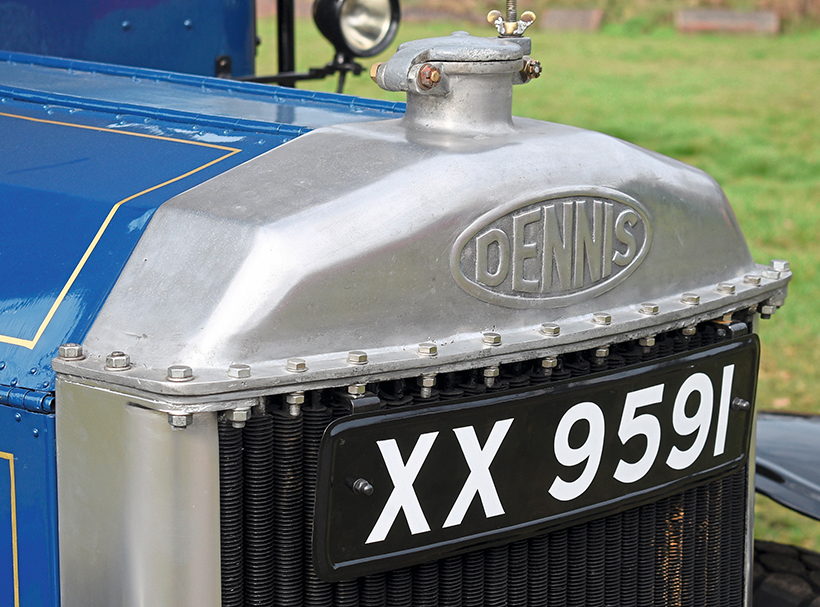
The radiator has always looked handsome, but internal rot provided a challenge for the restorers to overcome.
After the Public’s demise, Bennett moved into speculative property development, capitalising on the rapid spread of suburbia. In 1929, with two other partners, he purchased the Spring Park Farm estate near Croydon for the sum of £15,000. They formed Gower Builders, constructing a large private housing estate on the former farmland. Bennett continued to live near Edmonton and died in Winchmore Hill, in 1969.
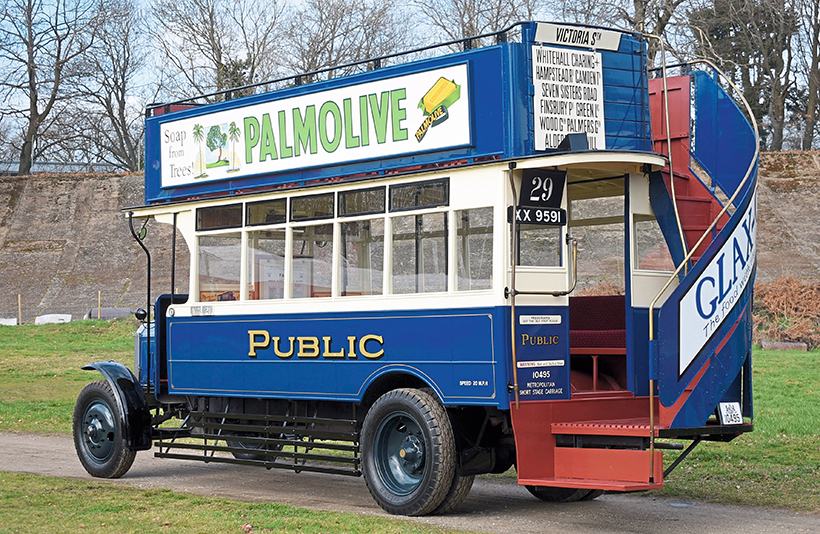
Marshall gave D142 a new lease of life but, after 50 years, it was time for another overhaul.
As with many firms, Dennis experienced a worrying slump in business after the Great War but, during the early 1920s, trade really took off, helped by the introduction of heavier chassis. The four-ton chassis appeared in 1924, priced competitively at £860, and a long-chassis variation was specially conceived for use by bus operators. This 1925 four-ton, chassis 40347, is one of a handful of survivors with a known pirate history. It was originally supplied to cab operator WH Cook’s Dominion Omnibus Company, sporting solid tyres and 48-seat bodywork by Christopher Dodson Ltd. of Willesden. Dodson himself strongly supported the pirates, and refused to take on any work for the LGOC.

As big as the front wheels are, they do without brakes.
The Dominion colours were presumably intended to be taken for LGOC’s from a distance, as 40347 entered service painted red, with a white relief added in its first year, and gold ‘Dominion’ lettering down the side. Dominion ran two Dennises on route 514 along the Uxbridge Road until March 1926, when its licence was revoked and the business was bought by the LGOC.
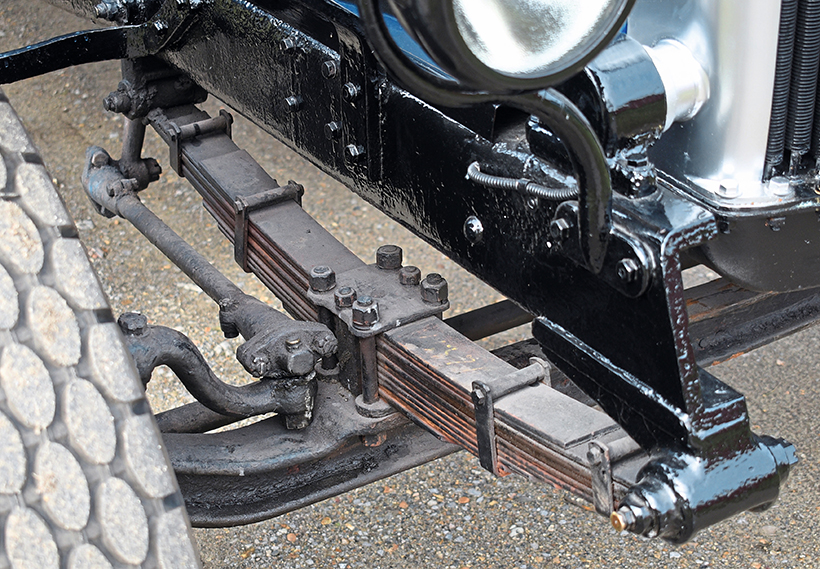
With strong beam axle and leaf springs, D142’s construction is simple but robust.
With the LGOC, the Dennis was re-numbered D22 and overhauled shortly afterwards with a new but very similar body. In late 1926 it joined the fleet of Redburn’s, another independent the LGOC had taken over, in Enfield, but Redburn’s became fully absorbed by the start of 1928 and the Dennis was sold by the LGOC to its plain-clothes rival, the London Public Omnibus Company, which already had a large fleet of Dennises and which numbered it D142. With the Public, it ran route 529 from Winchmore Hill to Pimlico.

Despite being discovered in poor condition, the 1970s restoration retained most of the original timbers.
This phase was also short-lived, as the Public was formally taken over by the General in 1929, and D142 became red again, but continued to work the 529 from Enfield garage before being moved to West Green garage in April 1930. It was re-bodied in July 1930, and a final overhaul in June 1931 saw it fitted with another 48-seat Dodson body, 10837.
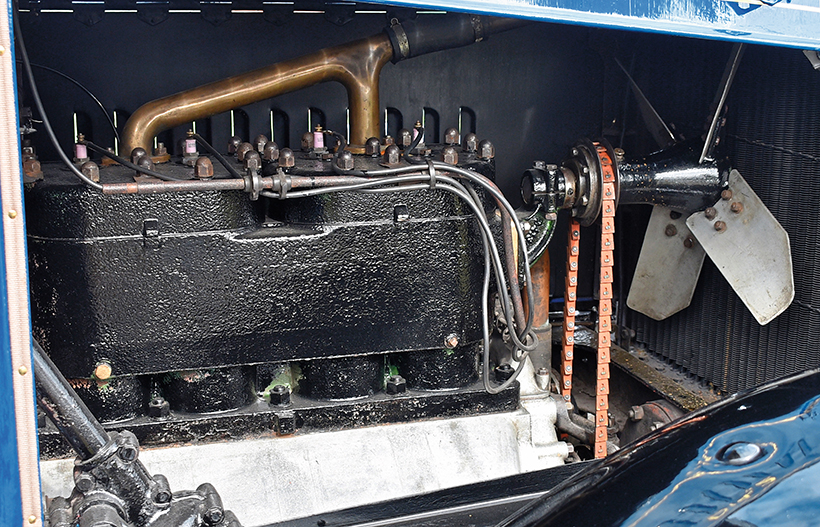
The torquey 5.8-litre engine looks blockish, but it’s strong and perfectly suited to its purpose.
This was not a new body but, in fact, one which had originally been built for a different 1925 Dennis operated by Paragon, which also used red and white colours, on the 526D between North Finchley and Wandsworth Bridge. This bus, too, was acquired first by the Public in 1927 and then by the General in 1929.
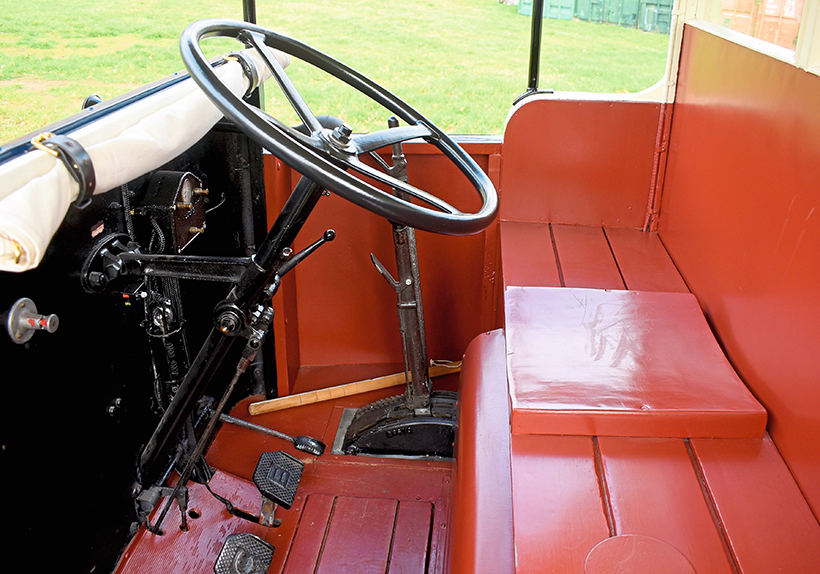
It’s one of the last two-seater cabs before one-man cabs alongside the engine became the norm.
D142 was ultimately withdrawn from service in December 1931, having spent some time at Hounslow Garage before seemingly ending its days at Hackney, on the 96 route from Putney to Wanstead. In July 1932, it was bought by F McKinless of Hendon, after which its history is a blank until 1971, when it was discovered by some children, covered in corrugated metal and brambles, in Wickford, Essex, just 50 yards from the Southend road. Impressively, the fareboard and a few internal advertisements survived intact, including a gospel message from the London Tramcar and Omnibus Scripture Text Mission of 29 Charterhouse Square, an organisation dedicated to spreading Christian teaching through public transport advertisements since 1883.

There are no gauges for the driver to worry about, save for the Lucas ammeter.
D142’s saviour was that great preservationist Prince Marshall, who subjected it to a restoration over the course of 12 months, but it had fared unexpectedly well and the body required very little work, with most of the original timbers being retained. Marshall was enthusiastic about using D142 and promoting preservation and, once its restoration was completed in 1972, it was despatched on a six-week tour of England for the English Tourist Board, followed by a 2,000-mile trip round Japan for the Department of Trade & Industry. It then ran for 10 years on London’s route 100, the heritage service established by Marshall. When that ceased in 1983, D142 was purchased by the London Bus Preservation Trust, and has been a popular exhibit at the London Bus Museum ever since.

The upper seats required extensive restoration, as several had broken slats.
This time last year, that would have been the end of the story, but now D142 has just emerged from a restoration in the distinctive blue livery of the London Public. Regular visitors to the London Bus Museum in recent years can’t have failed to notice the ongoing restoration of an AEC NS-type. With that estimated for completion roughly two years from now, the museum has taken the view that the NS – an LGOC vehicle from new – will be the ideal representation of the red, open-top bus of the ’20s, thereby making room for the Dennis to highlight the generally forgotten pirate aspect of London bus history.

Choosing the shade of blue paint required a spot of guesswork, but it’s a genuine 1920’s automotive colour.
Museum chairman Leon Daniels explains the colour choice: “It had to be in the livery of the Public because that was the only pirate livery it wore with pneumatic tyres – anything else would have had to be run on solids. In 1925 there was obviously no colour photography, and if there had been colour degradation would render it unreliable. We knew the Public used a dark blue and we found an automotive swatch from the 1920s, so we had that made. It may not be 100% accurate, but there’s no one left to tell us that and it’s a genuine automotive colour.”

Pirate operations were fully legal concerns until 1934.
Livery aside, the 50-year-old restoration needed redoing. According to project leader Alan Gaskell, ‘D142 was not only jaded in appearance, but the upper deck floor leaked so much that passengers were almost wetter inside than on the top deck during heavy rain.’ Gaskell, a skilled joiner, started work in March 2019 by lifting off the upper deck surround in order to strip the floor. The original calico and dope waterproofing was replaced with a liquid rubber, and a new, custom-machined Scots pine floor was installed. That being done, the surround panels went back and Gaskell turned to the lower floor, which he discovered was rotten in places, so a new floor was laid with new Iroko slats throughout the bus.

The patinated notice from the London Tramcar & Omnibus Scripture Text Mission is one of the most charming features.
The radiator required a comprehensive overhaul as the header tank was discovered to be rotten, so a new copper tank was manufactured by Boston Motorcool and concealed within the header. Museum volunteer Ian Reddick completely rewired the bus with a reconditioned dynamo and a restored and upgraded switch box in the cab for the lights. Reddick also performed metal repairs where rust had set in, such as on the mudguards.

The original driver’s instruction board has been preserved as it was found.
Gaskell made new fanlight sashes and re-glazed every window with toughened glass and new beads, except for the one behind the driver which contained the historic mission notice. After localised timber repairs, Gaskell found the seats, which had broken slats, were beyond proper repair, so he made new ones from scratch at home during lockdown, and Nigel Gower prepared the bus for painting by Martin James of Classic PSV. The paint was entirely hand-brushed for an authentic finish. Gaskell researched period advertising and, after he prepared the panels, the advertisements were painted by Stuart Betts.
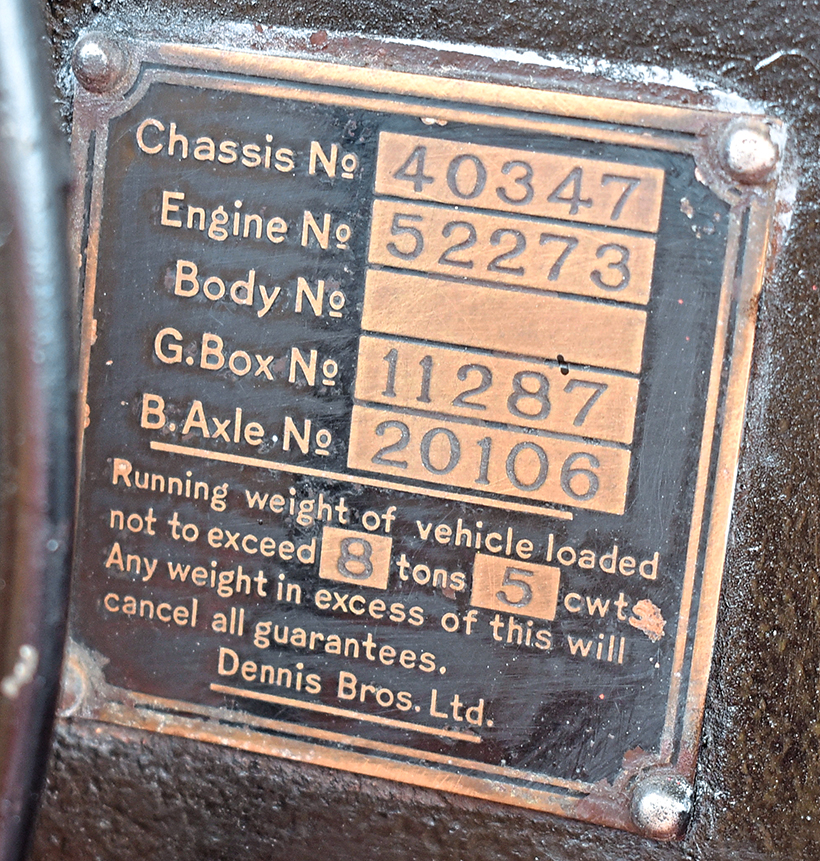
The chassis plaque details the bus’s maximum running weight of 8 tons 5cwt.
In July 2022, Gaskell refitted the seats with new wet-weather canvas covers, while the downstairs seats were recovered by Paul Toomer using the correct moquette, which was available from the London Transport Museum. To finish it off, the electrics and restored accessories were reinstalled, and the refreshed D142 was unveiled before admiring crowds at the museum’s TransportFest in October 2022.
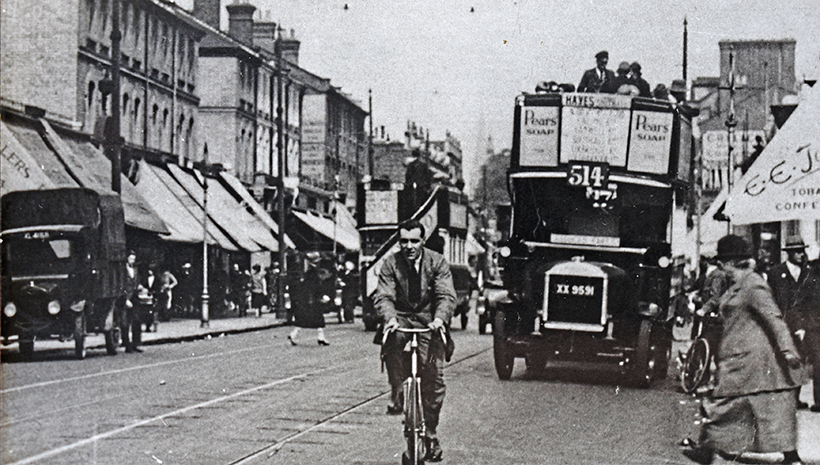
The Dennis photographed when new, in service on the Uxbridge Road.
Leon Daniels kindly agreed to fire-up D142 so I could see how it drives. The starting procedure is much the same as with a car of the period – flood the carburettor, fully retard the ignition, and then turn the handle, except the handle isn’t so much swung as snatched in a 180° course from bottom to top. It fires up obediently, the chug of the 5.8-litre four-cylinder engine draws a crowd, and the Dennis sits bouncing up and down on its front springs, happy to be going for an outing.
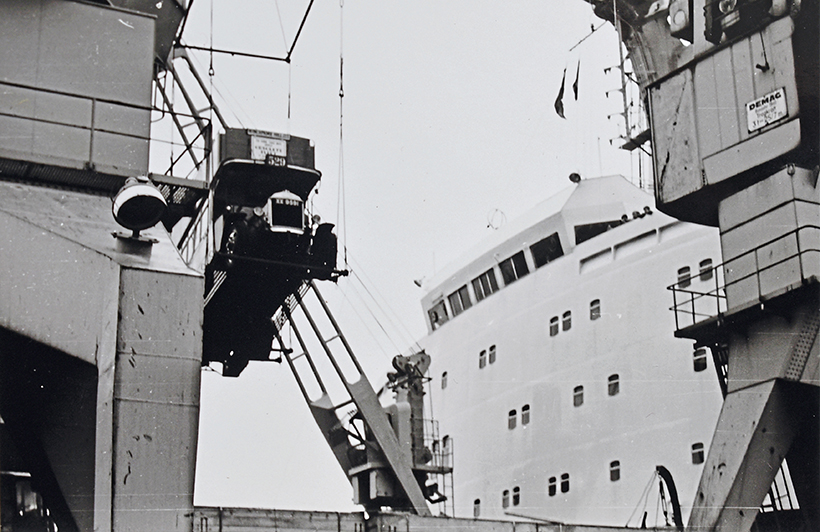
Here the Dennis is seen being shipped to Japan for a promotional tour.
Needless to say, we don’t reach lightning speeds, but it’s obviously a very controllable vehicle to one who knows what they’re doing, even though the only meaningful stopping power is from the hand-operated rear-wheel brakes, the foot-operated transmission brake being fairly ineffectual. Four-wheel brakes appeared in 1926 with the Dennis E-type, prior to which they hadn’t been permitted on public-service buses. Though the steering looks like a workout, it negotiates some fairly tight roundabouts without any trouble. The gearbox is a four-speed, but first is rarely used.
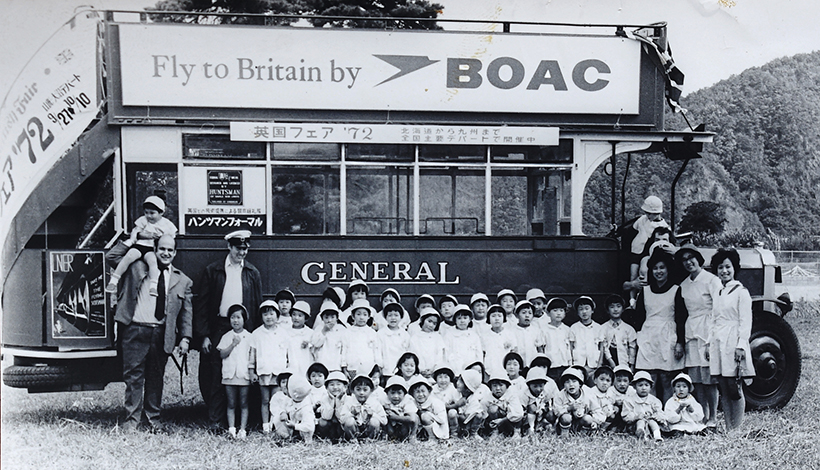
Children of Yamagata wait for a ride in the Dennis, in October 1972.
Leon says: “The footbrake is broadly of no use at all and the clutch you only use for pulling away from rest. The typical operation would be that you push it down for just long enough to select second as a starting gear, but otherwise you just listen to the revolutions.”
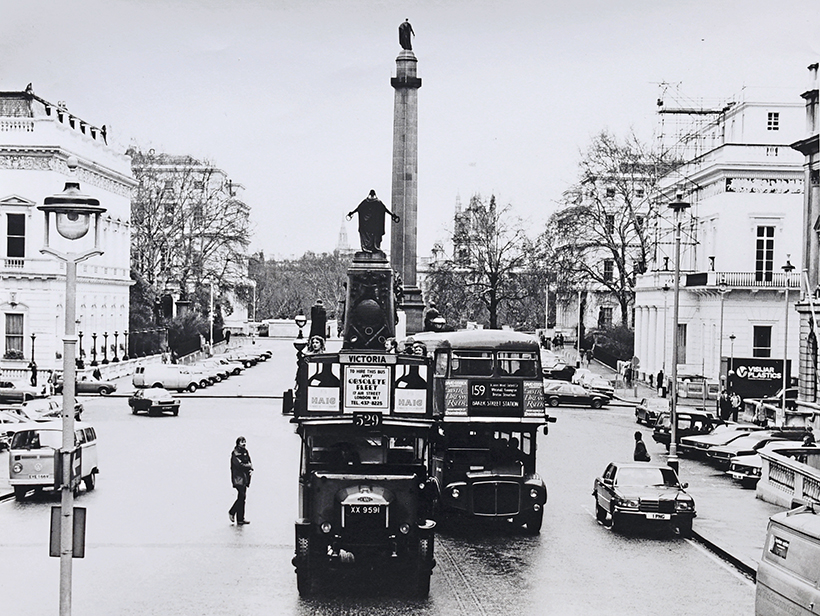
It ran on the heritage route 100 from the London Transport Museum around the West End.
As one would expect from an experienced operator, Leon’s gear changes are smooth, although the ‘box isn’t designed to be hurried so, when occasion calls for a quick change, there may be a clunk. Leon confesses that not every change goes as intended: “Every now and then she reminds you that she’s in charge and not you. It’s very low-geared so the changes take place at relatively low revolutions.”

Museum volunteer Ian Reddick demonstrates the ‘snatching’ method of starting the bus.
He continues: “It’s quite enjoyable, but the bus was never designed for today’s traffic. During the course of driving you’ll be altering the advance/retard as appropriate. On the approach to a roundabout, you’re kicking her out of top and into neutral, slowing down and revving for third, so your right hand’s very busy. It’s a straightforward, purely mechanical steering linkage. The amount of effort needed to steer is inversely proportional to your speed. At slow speeds you’re using a lot of upper body strength.”
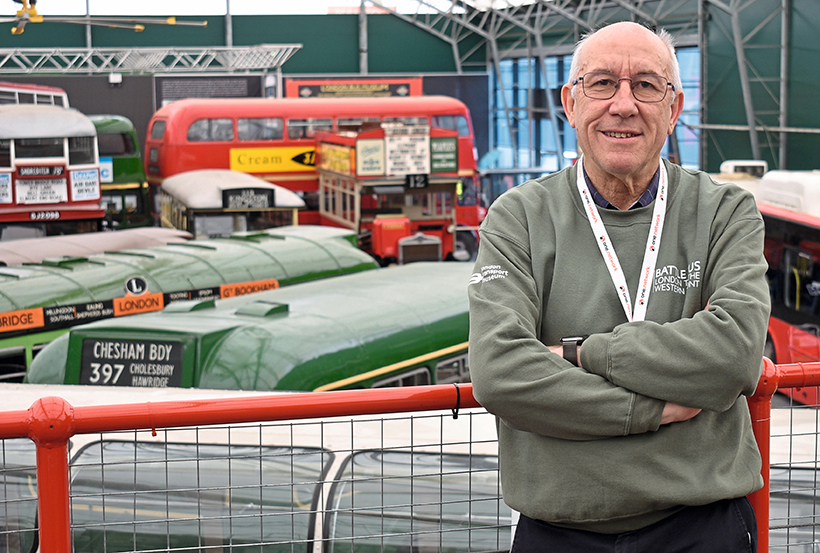
Chairman Leon Daniels shows off some of the museum’s impressive exhibits.
Since completion, D142 has occupied pride of place in the London Bus Museum’s main hall and, like all its buses, will be maintained in full running order. So, when you can, pay a visit and see it in all its piratical glory – it’s well worth a look.
This feature comes from the latest issue of Old Glory, and you can get a money-saving subscription to this magazine simply by clicking HERE

Previous Post
Fascinating memories of the lime-spreading industry
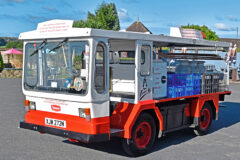
Next Post
Beautifully-restored electric-powered milk float



